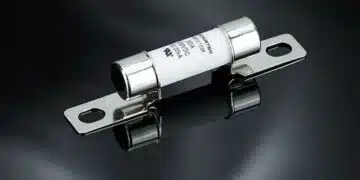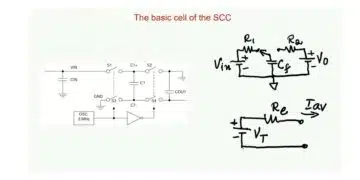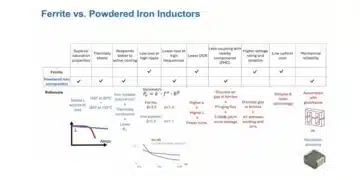The world we live in today is the world of machines and information. Therefore the single most important commodity in this age of information is energy. Energy is essentially the fuel of modern economic engines. Without energy, all the sophisticated machines and gadgets are as good as garbage.
In the last decade or so, a number of technologies have been introduced which have created huge disruptions in their respective sectors. Major examples include: electric vehicles and smartphones. Both of these technologies are making full use of advanced IT technologies like the Internet of Things, Artificial Intelligence, and 5G communications. Despite all these technical advancements, the area of power transfer remains somewhat neglected. A large percentage of electronic and electrical devices are still powered using cables and cords. The solution to this problem does exist in the form of wireless power transfer (WPT).
How Wireless Power Transfer Works
In plain language, WPT is a technology that makes it possible to transfer electrical power through an air gap without any wires or cables. WPT works on the principle of magnetic induction based on Faraday’s law. According to this principle, if we have two magnetically coupled coils then an AC current flow through the transmitter coil will induce a voltage in the receiver coil. This induced voltage can be used for charging electronic devices. Note that there is no physical contact between the transmitter and receiver coils and the entire power transmission takes place through magnetic fields only.


The concept of wireless power transfer has long been known since the invention of the Tesla coil. However, due to low power conversion efficiency, this technology could not be commercialized for a long period of time. With the development of new materials and more efficient electronic converters, it is now possible to transfer energy wirelessly with decent efficiency. In recent years, WPT has gained some traction in the form of wireless charging pads for smartphones and tablets however the scope of this technology is much broader than that.
Wireless Power Charging Techniques
The wireless power transmission can be achieved using a number of different methods. The most widely used methods are based on the principle of magnetic induction while others make use of electric fields, light, and microwaves. A summary of different WPT techniques is presented in the table below.


Ferrite Material in Wireless Power Charging
As described earlier, power conversion efficiency is the major roadblock in mass adoption of WPT for large-scale applications such as automotive and manufacturing industries. KEMET has now introduced the solution to this problem by using ferrite material in the charging pads of the WPT system. Ferrite is known for delivering the highest charging efficiency in WPT systems. Following is the KEMET FPL ferrite tile for use in automotive and industrial WPT systems.
Salient Features of FPL Ferrite Tiles:
- Increased efficiency
- Designed for high-power WPT systems (3.7 kW – 30 kW)
- High operating frequency range up to 1 MHz
- Wide operating temperature range (-40oC to +125oC)
- AEC-200 qualified
In conventional WPT systems, most magnetic flux is absorbed by the metal housing and does not reach the receiver pad. Due to this, power losses increase, and power efficiency suffers. High power losses generate excess heat, which can quickly fry the components and cause safety hazards for the operator or consumer. In ferrite-based WPT systems, the ferrite plate suppresses the interference between the antenna pad and the metal housing. In this way, the flow of magnetic flux is retained between the transmitter and receiver antennas to enhance the charging efficiency. The difference in the magnetic flux path in conventional and ferrite-based WPT systems can be seen in the following images.


It is clear from Figure-2 and Figure-3 that a significant amount of magnetic energy leaks into the metal housing in the conventional WPT system, whereas in the ferrite-based WPT system, the ferrite plate prevents the magnetic energy from getting absorbed in the metal housing.
Apart from charging efficiency, operating temperature is another critical consideration in WPT systems. In conventional WPT materials, core losses are very high at lower temperatures, due to which the system is highly inefficient at room temperatures. On the contrary, Ferrite WPT systems can efficiently operate at room temperature while delivering good charging efficiency. The core losses of conventional ferrite and KEMET’s proprietary ferrite WPT materials are compared in the graph below.

From the comparison chart of core losses, when operating at 25oC the core losses of industry-standard ferrite material are 580 kW/m3, whereas, at the same temperature, the core losses of the KEMET ferrite material are around 350 kW/m3. Thus, this particular ferrite exhibits 60% fewer core losses at room temperature, which is a huge difference. Due to the high charging efficiency and low core losses, these FPL ferrite tiles are ideal for automotive WPT and industrial WPT systems.
Ferrite Material Handling Precautions
Ferrite is ideal for WPT systems due to its excellent efficiency, frequency, and temperature characteristics. However, there are some precautions that must be considered when working with ferrite WPT plates. The first precaution is regarding mechanical stress and shock. Ferrite is a brittle material with a low tolerance for impact. The plate can easily break or get cracked in case of a drop or mechanical impact. Using a broken or cracked chip will result in increased heating which might damage the associated circuit components. The material must be handled carefully to avoid mechanical stress or impact.
Additionally, precautions must be taken when approaching elevated temperatures. The material will experience thermal shock at extreme temperatures, resulting in cracking, breaking, and or degradation of properties. Rapid temperature fluctuations must be kept as low as possible to ensure longevity and high performance.
Ferrite Tiles in Automotive WPT Applications
The tile’s thermal characteristics coupled with low core losses and high efficiency makes these tiles ideal for automotive WPT systems. WPT systems are becoming increasingly common in conventional as well as electric vehicles. Smartphones have become an integral part of people’s lives; therefore, it is crucial to provide wireless charging on the go. The scope of WPT is not limited to smartphone charging in automobiles only. High-voltage WPT systems have already been proposed for the charging of electric vehicles. Municipal vehicles such as fixed loop buses might be the first adopters of automotive WPT technology in the public domain. Wireless mobility is the future and KEMET FPL ferrite tiles are designed for high-power automotive systems ranging from 3.7 kW to 30 kW.

At present, the electric vehicle industry is still in its early phase of development, and due to this reason, there is a lack of standardized EV charging system design. Most of the manufacturers are following their designs and techniques for the EV charging systems. The availability of KEMET FPL ferrite tiles in customized shapes and sizes is a massive benefit for automotive WPT system designers. With customized dimensions, designers can focus on engineering aspects without worrying about space/dimensional constraints. KEMET ferrite tile products are available on high service distribution channels for sampling and testing purposes.
Ferrite Tiles, Beyond Automotive
Currently, the primary market of WPT ferrite tiles is automotive companies. However, this does not limit the applications of these tiles in other areas. Apart from the automotive industry, these tiles can find their application in robotics, forklifts, agricultural machines, medical equipment, military drones, and industrial machinery. With increasing charging efficiency, WPT technology is expected to grow in the coming years. As the power ratings of WPT systems increase, ferrite tiles might also find their position in the power generation sector. With their excellent charging characteristics, ferrite tiles will be an integral part of the WPT systems of the future.
Conclusion
KEMET is an industry leader in developing and producing ferrite tiles for WPT systems. The cutting-edge in-house technology ensures the highest charging efficiency, wide temperature range, excellent thermal characteristics, and lowest core losses. Moreover, clients have the option of ordering tiles in customized sizes and shapes which increases design flexibility. With its market-leading features, KEMET ferrite tiles are an optimal solution for automotive WPT system needs.


































